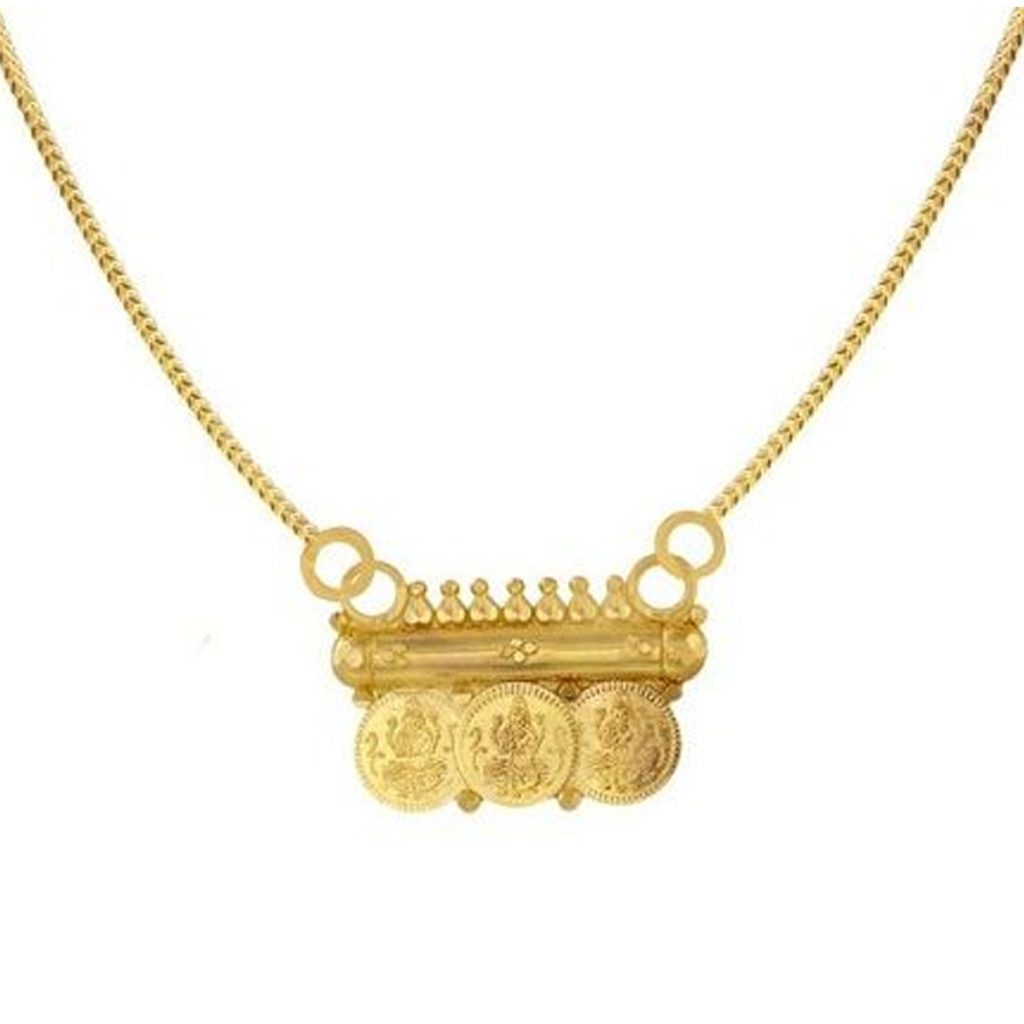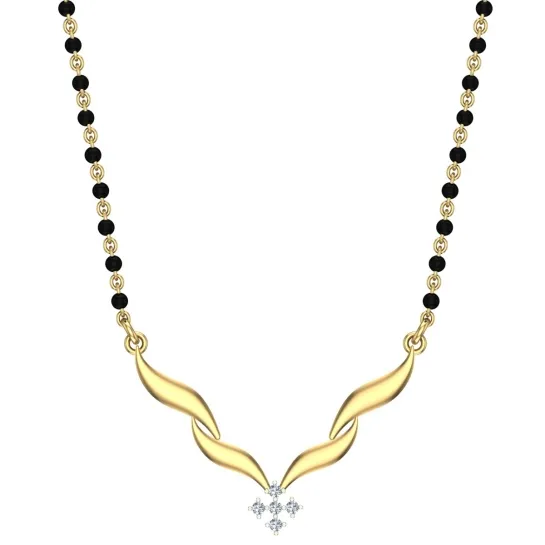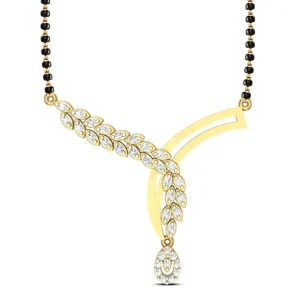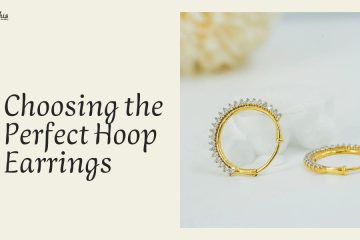The mangalsutra pendants, a sacred thread that adorns Hindu women’s necks from the day of marriage, hold much meaning. Apart from being just an ornament, the mangalsutra represents the never-ending cycle of life, love, and joy. It is like experiencing joy conveyed by couples, which is promising, just like the gold and black beads and complex designs. As in the major variant underneath, every one of these different weddings is an everyday presence, but worldwide, the richness of Indian wedding customs is excellent, for it is a miracle of the whole Indian fabric itself.
South Indian Gold Mangalsutra Pendants
In South India, the custom of wearing gold indicates their cultural background. Hence, in the realm of the mangalsutra, this passion is inherited. This is where gold is fashioned into jewelry, most of the time through prestigious techniques that turn it into the exquisite jewelry it deserves to be. The latest trend continues in various regions of wearing gold mangalsutra pendants.

Temple City Twinkle:
Tamil Nadu Mangalsutra – a dwelling depicted by the pillared temple, embellished with patterns, and the main Lakshmi sculpture in the center (representing prosperity). Through this breathtaking combination, you not only find the beauty of the classic Tamil Nadu but also the spirit of it. The tradition of placing glass stones on the mangalsutra pendants of worshippers is another common practice. It is not uncommon for these exuberant red and green stones to be added for an even more exciting effect.
A Celebration of Fertility:
Mango mania in Kerala & Karnataka – The fruit of love in matrimony needs no wanton association in this part of the southern region as the mangalsutra pendant takes the form of a ripe mango. The orange here – a common symbol of abundance and fertility is surprisingly a vivid blessing for the newly married couples embarking on their marital journey. The mango pendant can come accurately, either plain or with exquisite pearls engraved, giving the accessory a delightfully classic look.
Mythological Marvels:
Showing the Mangalsutra – Andhra Pradesh & Telangana symbols, the pendant symbols represent Lakshmi (the power Goddess) or Parvati (the creative goddess who is responsible for the world’s beauty and purity). The finer details of the marriage rituals with the religious symbolism in the South Indian culture reinforce the link between the faith and the marriage vows, too. Just picture yourself wearing a beautiful, delicate gold rope mangalsutra pendant with the image of Lakshmi, the goddess of wealth and prosperity, an everlasting and continuing reminder of all the good things given to you as a couple.
Beads and Black Mangalsutra in North India
The Mangalsutra of North Indian is very popular because it displays subtle decorations and has more meaning. Black-beaded pendants, the images of which bring life and repulse evil, can often be seen here.
Black Beauty Mangalsutra:
Maharashtra & Goa – In both these places, the mangalsutra consists of a long chain in gold, which signifies a married woman. Think of a nice black bead chain dropping before some vital golden mangalsutra pendant called ‘Tanmaniya.’ The design of the pendant may be just a straightforward disc or something more ornate, like a lotus flower, which would just be an expression of the wearer’s unique style and personal preferences.
Two is Company:
Apart from the Gujarat & Rajasthan Mangalsutra – black beads are constantly accompanied by marigold yellow threads in many Gujarat and Rajasthan villages. The finished pendant may be a ring with a simple gold circle engraved or a more complex design, including geometric patterns or flower motifs. For instance, an attractive mangalsutra adorned with a large gold pendant carved with a domestic design can be compared to black and yellow beads sitting between them.
Coins of Love:
Revealing the Importance of Sikh Community Wedding Necklet – While it is a tribute to a Sikh wedding, it is the Sikh community wedding necklet that takes the lead. The bride’s father or groom provides her with a small gold coin with black thread that has a golden coin tied to it. Meaning the prosperity and unwavering attitude as spouse meets on their matrimonial travel, this simple and powerful symbol gives masses.
A Fusion of Styles in East India
The South and North Indian customs are combined in how East India presents its mangalsutra, creating their symbol of marital harmony.
Modern Twists on an Ancient Tradition
This mangalsutra, like all living traditions, is changing all the time to reflect society’s transformation. In the present day, more of those women are picking lassos that are lightweight and made of diamonds, platinum fish, or colored gemstones. Others are into a contemporary style defined by geometric or minimalist figures.
Dishi’s Jewels offer individuals seamless ways to explore and budget for various experiences. The main idea of the mangalsutra pendants remains unchanged even though the present-day variations make it more appealing – a symbol of love, binding commitment, and, ultimately, the bliss of the newlywed phase.
Cultural Significance
The mangalsutra is narrow and woven around the bride’s neck by the groom’s mother or elder brother. Such an item can speak much more than just a vivid piece of jewelry. It enjoys widespread hope, and although it differs from one region to another, it is attractive by comparing different cultures and the beliefs and traditions held close by these communities.
1. Family Traditions
A Legacy Interwoven in Gold – In parts of society, the design of mangalsutra pendants is kept in the family as a heritage. Share a thought of a bride getting on a maroon-colored mangalsutra worn by two other women before her grandmom and mother. This blessing of beauty augments the bond between the generations, history, and present, producing an oriental pattern of love and wedding promises.
2. Community Identity:
A Visual Symbol of a Woman – Mangalsutra has been put here as a visual symbol that plays a role in a woman’s marital status and belonging to a definite community. For example, Tamil Nadu’s temple-inspired elaborate pendants manifest as a determinant of the wearer’s contribution to South Indian traditions. At the same time, the black and yellow thread combination worn by the Gujarati brides represents their association with the particular traditions of the region.
3. Blessings & Protection:
The Start of It All In – The materials of the pendant and its construction are frequently invested with great significance and regarded as the source of particular good and protection for the newlyweds. South Indian Lakshmi designs beads of gold could stand for prosperity, though black beads of stones or marble spread across the country are supposed to protect the couple from bad things and bring their strong, long life.
4. Black & Gold Harmony:
Bringing black beads to the West Bengal & Odisha markets is basic and a must, but there is an option to put different pendants. It could be just a gold coin in West Bengal, such as an infallible sign of everlasting ties. In contrast, Odisha presents more divine artistic styles and themes, like complex floral and temple designs representing the area’s rich artistic heritage.
5. Golden Grandeur:
Shedding Light on Biharis Mangalsutras – the beads in Mangalsutra here are usually black but of special importance by gold pendant. The design can range from a flat stand button to a masterpiece decorated with filigree. Imagine an impressive pendant featuring delicate entwined cord designs, giving the bride’s dress a fancy touch.
A Celebration of Unity
Mangalsutra Pendants, in all forms, may be associated with different regions, but that tie of love and union stayed the same. A wedding dress always makes the bride feel proud of her engagement, through what she has pledged, her promises, and the glorious voyage ahead of the newly married couple. It gives meaning beyond being a mere accessory and turns into a prized component of a lady’s identity, reflecting the historical tradition that has survived for ages.
The next time you come across a woman draped in mangalsutra, reflect on how this ornament reflects the story – a story woven in gold and black beads and the lively threads that characterize Indian heritage, a story that stands for the everlasting triumph of love and bond.




